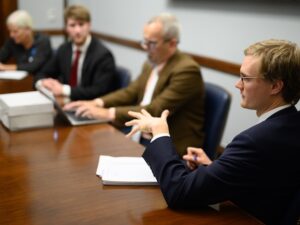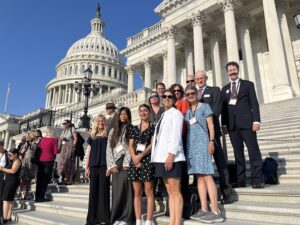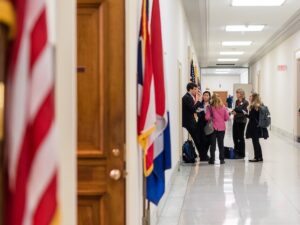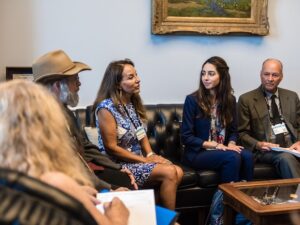Holding the line on climate: Forest Service
This post is Part 3 in a series recapping some of the Trump administration and Congress’s interactions on climate, what CCL has done in response, and what we plan to do in the future. Catch up on the series introduction, on Part 1 about funding at staffing cuts at NOAA, or on Part 2 about climate and clean energy funding at the Department of Energy.
Another example that is still developing is the administration’s staffing cuts to the U.S. Forest Service. The Trump administration “has cut 10 percent of workers at the Forest Service, an agency that manages 193 million acres of national forests and grasslands, with more firings and a steep reorganization likely coming,” Politico reported in April.
As with NOAA and the DOE programs mentioned earlier in this series, the Forest Service is funded through congressional appropriations. Kneecapping its capabilities runs counter to congressional intent — not to mention that it would put whole swaths of the country at risk as we head into wildfire season.
CCL currently supports a piece of legislation called the Fix Our Forests Act, which would rely heavily on the Forest Service to be carried out as written. In every Capitol Hill conversation our Government Affairs team has around this bill, they have been raising the concern of Forest Service staffing cuts and funding.
Those efforts bore fruit through a letter from the bill’s four bipartisan authors to the Senate Committee on Appropriations. Sen. John Curtis (R-UT), Sen. John Hickenlooper (D-CO), Sen. Tim Sheehy (R-MT) and Sen. Alex Padilla (D-CA) said, “We write to express our strong support for providing robust wildfire resilience funding in Fiscal Year 2026 to the U.S. Forest Service and Department of the Interior.”
The letter continued, “As projections for the summer ahead forecast that as much as 9 million acres could burn, we urge you to dedicate a significant funding increase to ensure adequate staffing and provide the necessary resources to fund hazardous fuels reduction, community wildfire risk reduction efforts, vegetation management. and decision support services to help manage our wildfire risk.”
These senators specifically mentioned their bill, the Fix Our Forests Act, and recognized the importance of wildfire resilience, community preparedness. reforestation, and other risk-reduction strategies. “But none of that work can actually happen without the federal staffing and financial resources to implement this work on the ground,” they wrote.
As we prepare for our grassroots volunteers to mobilize around this bill in the coming weeks and months, we will bolster and build on this bipartisan effort in Congress. We will request that additional lawmakers not only support the Fix Our Forests Act, but also that they work to ensure appropriate resources and funding for the Forest Service so the legislation can be carried out as intended.
Catch up on the introduction, Part 1, and Part 2 of this blog series, or keep reading:






